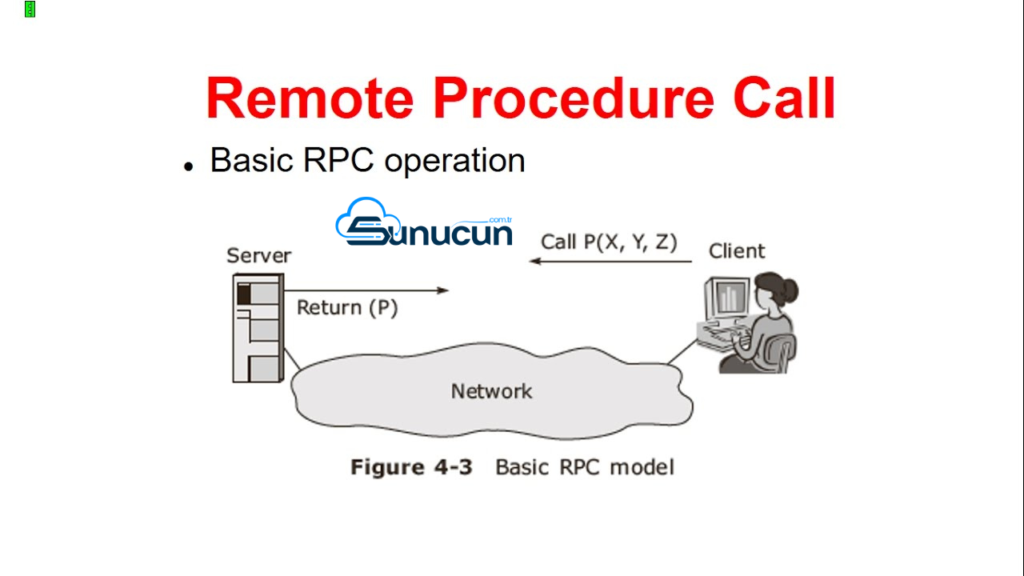What is RPC and Its Protocols – Everything You Need to Know About Remote Procedure Calls
RPC (Remote Procedure Call) is a communication protocol that allows a computer program to invoke a function or procedure on another computer. RPC facilitates collaboration between different machines in distributed systems, enabling applications to interact with each other. In this article, we will explore what RPC is, how it works, and the common protocols associated with it.
What is RPC? – A Basic Definition
RPC is a method that allows programs to communicate with another program over a network. It is commonly used in client-server architecture, enabling the client to invoke a procedure located on the server. RPC makes this call appear similar to a local procedure call, meaning that users or developers do not need to deal with the complexities of network communication.
The fundamental advantages of RPC include simplicity, performance, and the facilitation of managing distributed systems. Developers do not have to write complex network code to interact with remote systems, resulting in a faster development process with fewer errors.

How Does RPC Work?
RPC operates between the client and server through the following steps:
- Client Side: The client creates a request to invoke a remote procedure. This request is sent to the server along with the necessary parameters.
- Transmission: The request is transmitted over the network to the server. This process usually takes place via a communication protocol.
- Server Side: The server receives the incoming request and executes the requested procedure. At this stage, the procedure parameters are processed and a result is generated.
- Result Transmission: The server sends the obtained result back to the client. This response is conveyed in a format expected by the client.
- Result Processing: The client receives the response from the server and continues processing as needed.
RPC Protocols
RPC can be implemented with various protocols. Here are some of the most common RPC protocols:
- XML-RPC: XML-RPC is a simple RPC protocol that transmits data in XML format. It communicates over HTTP and is commonly used in web services. Its platform independence facilitates data exchange between different systems.
- JSON-RPC: JSON-RPC is an RPC protocol that transmits data in JSON format. Similar to XML-RPC, it is lighter and faster. It is widely used in web applications and offers a simple structure for client-server communication.
- gRPC: Developed by Google, gRPC is a high-performance RPC framework that operates over the HTTP/2 protocol. It uses Protocol Buffers as its protocol definition language, providing a fast, reliable, and language-agnostic structure. It is especially popular in microservices architectures.
- SOAP: SOAP (Simple Object Access Protocol) is an XML-based protocol commonly used for web services. Its more complex structure offers features such as security and message integrity, but it can be more challenging to use. SOAP is often preferred in critical applications of large enterprises.
Advantages and Disadvantages of RPC
Some advantages of RPC include:
- Simplicity: Developers can invoke remote procedures without dealing with complex network communication. This reduces the amount of code that needs to be written and speeds up project development.
- Performance: RPC provides performance similar to local procedure calls, ensuring fast data transfer. This feature is crucial for time-sensitive applications.
- Support for Distributed Systems: RPC simplifies the management of distributed systems and supports communication across different platforms, allowing developers to run applications more efficiently across multiple systems.
However, it also has some disadvantages:
- Error Management: Errors occurring on the network can affect RPC calls and may require complex error management. Therefore, effective error handling is crucial for applications.
- Security: If not configured correctly, RPC can lead to security vulnerabilities. It is important to encrypt data during transmission, so security protocols such as TLS should be used.
- Connection Requirement: RPC requires a continuous network connection, which can lead to interruptions. Continuous network accessibility is a critical requirement for the efficient operation of systems.
Applications of RPC
RPC is used in various fields. For example, it plays a significant role in cloud-based services, microservices architectures, data processing applications, and game development. For applications interacting with distributed systems, RPC alleviates developers’ workload and offers more effective solutions.
Additionally, RPC protocols are frequently used in mobile applications and web-based services. This allows users to access fast and reliable services across different devices. For example, a mobile application might use RPC to retrieve data from a server, enhancing the user experience.
Conclusion – Why is RPC Important?
RPC is a critical technology for distributed systems and modern application development. By facilitating interaction between different machines, it allows developers to work more efficiently. With the right protocol selection and security measures, RPC provides a robust and effective communication method. Developers can leverage this technology to create more flexible and scalable applications. As a result, the advantages offered by RPC hold a significant place in modern software engineering.




